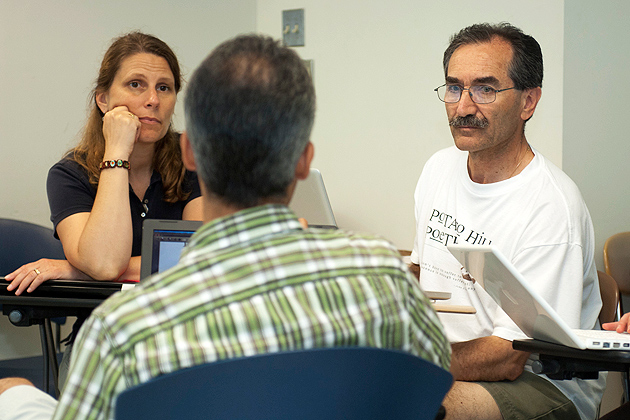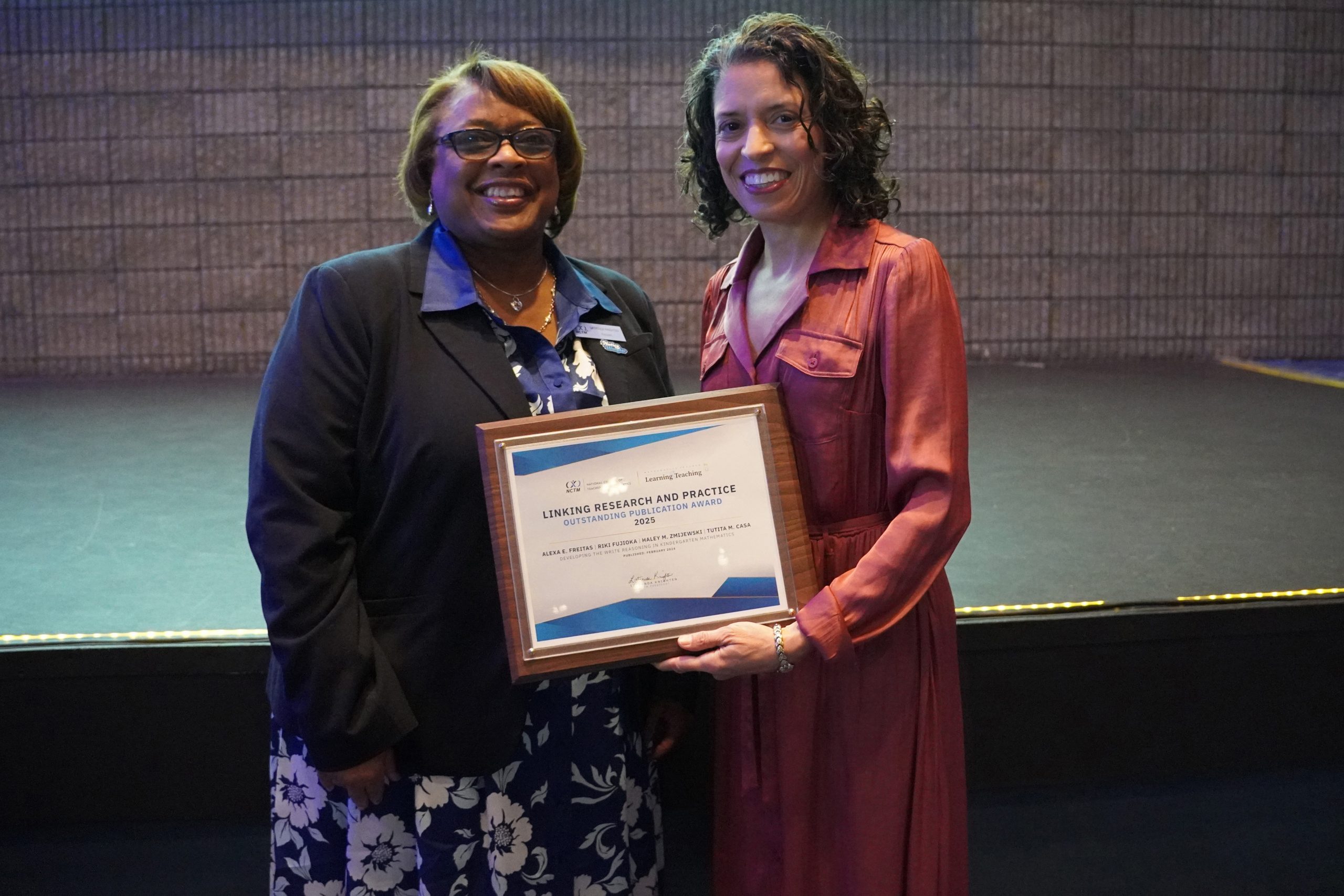
Many students at all levels struggle with writing. And many teachers welcome some help in working with them, too.
The Connecticut Writing Project (CWP) at UConn is a resource both for those who teach writing, from kindergarten through college, and for the students they teach.
The CWP-Storrs was established in 1982 with the goal of improving the writing of incoming students and providing training to teachers in how to teach writing. It is one of the oldest sites of the National Writing Project.
Today, the CWP works closely with the Neag School of Education, the University Writing Center, the Early College Experience and Freshmen English programs, and the Creative Writing program. Much of this is facilitated by the Aetna Chair of Writing, which the CWP helped establish.
The common thread among these programs is that they recognize the paramount importance of writing to student achievement. To that end, one of the CWP’s main goals is to provide teachers and students with opportunities to be writers.
From its earliest days, the CWP published the undergraduate literary journal Writing UConn, which later became the award-winning Long River Review, as well as a journal of graduate student writing that was a forerunner to Essay Connections. While these two publications have long since become the purview of other programs, the CWP continues to provide writing opportunities through a Summer Institute, Writers Retreats, a Teacher-as-Writer program, and Connecticut Student Writers magazine.
The Summer Institute is the foundation of the CWP. It is an intensive, interdisciplinary, four-week program that provides an interactive environment in which K-college teachers share their research and their writing. Half of the coursework is dedicated to work in writing groups and the development of a portfolio of original writing.
Participants say that having the opportunity to share work and receive peer feedback is invaluable. “Some of the best times are when we share our own writing,” says Kelly Andrews-Babcock, a teacher from Killingly who co-teaches the Summer Institute with CWP director Jason Courtmanche. “There are often gales of laughter, tears, and some heavy sighs. Friday read-arounds become an emotional roller coaster for all of us. It becomes a time of discovery, and we bare our souls through sharing our passions and pains.”
At the conclusion of the Institute, participants are asked to self-select one piece of writing for publication in Teacher-Writer, an annual journal that also includes writing from a fall contest and the Writers Retreats program.
Writers Retreats for teachers have been held since 1990, and take place at Wisdom House in Litchfield. These retreats provide teachers much-needed time to write and to benefit from the company of other teachers who write. Participants leave the retreats energized and recommitted to their work.
Nicole Waicunas, an English teacher at EO Smith High School in Storrs and recipient of the 2012 Stephen Sondheim Inspirational Teacher Award, said of her recent experience, “I felt welcomed as I read the words that I had so carefully written. The experience could not have been better for a new writer like me.” Rosemary LoStocco, also an English teacher at EO Smith High School, said of the program, “Wisdom House provided the uninterrupted concentration I needed to quiet my spirit and awaken memories. I grew from sharing my work with such gifted, compassionate writers.”
Denise Abercrombie runs both the Writers Retreats and the Teacher-as-Writer program, which meets several times a year on the Storrs campus. In this program, a small group of teachers gather to share their writing in a supportive environment.
Abercrombie describes the essence of the program when she says, “Teachers who make themselves vulnerable as fellow writers not only model the writing life for their students, but deepen their own teaching and writing practice.”
The CWP also provides opportunities for students to publish their writing. Since 1988, the CWP has published Connecticut Student Writers magazine, which features writing by students from kindergarten through high school. The magazine is currently edited by Griswold High English teacher Nadine Keane. More than 1,000 students submit their work each year; about 150 are published or receive honorable mention. These students are honored each spring at an event called Recognition Night, which is held at the Jorgensen Center for the Performing Arts and features a keynote address by a local children’s or young adult author, as well as readings by select students from each grade level.
“Students often work toward extrinsic rewards, such as good grades or parental approval,” says Keane. “However, the intrinsic rewards that come from publication are more profound. As the students enter Jorgensen Auditorium on Recognition Night, the young authors are radiant with pride.” This year’s event will be held on May 15.


